Li Yu
School of Electronic Information and Communications, Huazhong University of Science and Technology
LENS: Learning to Segment Anything with Unified Reinforced Reasoning
Aug 19, 2025Abstract:Text-prompted image segmentation enables fine-grained visual understanding and is critical for applications such as human-computer interaction and robotics. However, existing supervised fine-tuning methods typically ignore explicit chain-of-thought (CoT) reasoning at test time, which limits their ability to generalize to unseen prompts and domains. To address this issue, we introduce LENS, a scalable reinforcement-learning framework that jointly optimizes the reasoning process and segmentation in an end-to-end manner. We propose unified reinforcement-learning rewards that span sentence-, box-, and segment-level cues, encouraging the model to generate informative CoT rationales while refining mask quality. Using a publicly available 3-billion-parameter vision-language model, i.e., Qwen2.5-VL-3B-Instruct, LENS achieves an average cIoU of 81.2% on the RefCOCO, RefCOCO+, and RefCOCOg benchmarks, outperforming the strong fine-tuned method, i.e., GLaMM, by up to 5.6%. These results demonstrate that RL-driven CoT reasoning serves as a robust prior for text-prompted segmentation and offers a practical path toward more generalizable Segment Anything models. Code is available at https://github.com/hustvl/LENS.
Digital Twin Channel-Aided CSI Prediction: A Environment-based Subspace Extraction Approach for Achieving Low Overhead and Robustness
Aug 07, 2025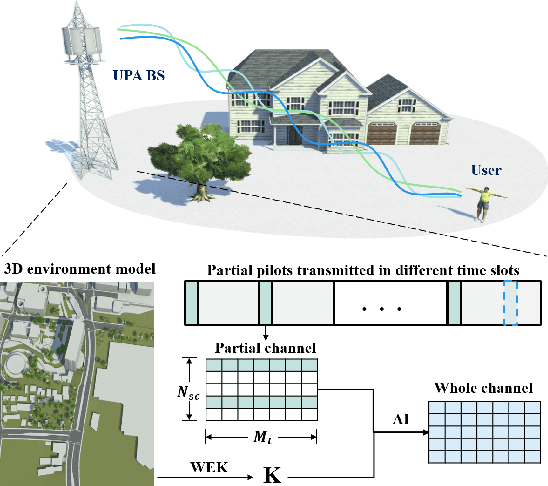
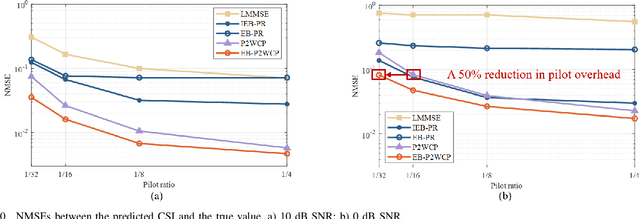
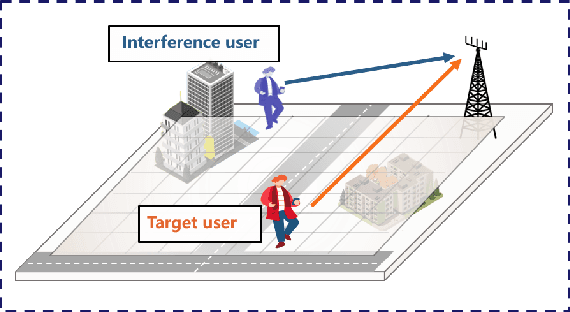

Abstract:To meet the robust and high-speed communication requirements of the sixth-generation (6G) mobile communication system in complex scenarios, sensing- and artificial intelligence (AI)-based digital twin channel (DTC) techniques become a promising approach to reduce system overhead. In this paper, we propose an environment-specific channel subspace basis (EB)-aided partial-to-whole channel state information (CSI) prediction method (EB-P2WCP) for realizing DTC-enabled low-overhead channel prediction. Specifically, EB is utilized to characterize the static properties of the electromagnetic environment, which is extracted from the digital twin map, serving as environmental information prior to the prediction task. Then, we fuse EB with real-time estimated local CSI to predict the entire spatial-frequency domain channel for both the present and future time instances. Hence, an EB-based partial-to-whole CSI prediction network (EB-P2WNet) is designed to achieve a robust channel prediction scheme in various complex scenarios. Simulation results indicate that incorporating EB provides significant benefits under low signal-to-noise ratio and pilot ratio conditions, achieving a reduction of up to 50% in pilot overhead. Additionally, the proposed method maintains robustness against multi-user interference, tolerating 3-meter localization errors with only a 0.5 dB NMSE increase, and predicts CSI for the next channel coherent time within 1.3 milliseconds.
Multi-Modal Large Models Based Beam Prediction: An Example Empowered by DeepSeek
Jun 06, 2025Abstract:Beam prediction is an effective approach to reduce training overhead in massive multiple-input multiple-output (MIMO) systems. However, existing beam prediction models still exhibit limited generalization ability in diverse scenarios, which remains a critical challenge. In this paper, we propose MLM-BP, a beam prediction framework based on the multi-modal large model released by DeepSeek, with full consideration of multi-modal environmental information. Specifically, the distribution of scatterers that impact the optimal beam is captured by the sensing devices. Then positions are tokenized to generate text-based representations, and multi-view images are processed by an image encoder, which is fine-tuned with low-rank adaptation (LoRA), to extract environmental embeddings. Finally, these embeddings are fed into the large model, and an output projection module is designed to determine the optimal beam index. Simulation results show that MLM-BP achieves 98.1% Top-1 accuracy on the simulation dataset. Additionally, it demonstrates few-shot generalization on a real-world dataset, achieving 72.7% Top-1 accuracy and 92.4% Top-3 accuracy with only 30% of the dataset, outperforming the existing small models by over 15%.
A Unified RCS Modeling of Typical Targets for 3GPP ISAC Channel Standardization and Experimental Analysis
May 27, 2025Abstract:Accurate radar cross section (RCS) modeling is crucial for characterizing target scattering and improving the precision of Integrated Sensing and Communication (ISAC) channel modeling. Existing RCS models are typically designed for specific target types, leading to increased complexity and lack of generalization. This makes it difficult to standardize RCS models for 3GPP ISAC channels, which need to account for multiple typical target types simultaneously. Furthermore, 3GPP models must support both system-level and link-level simulations, requiring the integration of large-scale and small-scale scattering characteristics. To address these challenges, this paper proposes a unified RCS modeling framework that consolidates these two aspects. The model decomposes RCS into three components: (1) a large-scale power factor representing overall scattering strength, (2) a small-scale angular-dependent component describing directional scattering, and (3) a random component accounting for variations across target instances. We validate the model through mono-static RCS measurements for UAV, human, and vehicle targets across five frequency bands. The results demonstrate that the proposed model can effectively capture RCS variations for different target types. Finally, the model is incorporated into an ISAC channel simulation platform to assess the impact of target RCS characteristics on path loss, delay spread, and angular spread, providing valuable insights for future ISAC system design.
A Unified Deterministic Channel Model for Multi-Type RIS with Reflective, Transmissive, and Polarization Operations
May 12, 2025Abstract:Reconfigurable Intelligent Surface (RIS) technologies have been considered as a promising enabler for 6G, enabling advantageous control of electromagnetic (EM) propagation. RIS can be categorized into multiple types based on their reflective/transmissive modes and polarization control capabilities, all of which are expected to be widely deployed in practical environments. A reliable RIS channel model is essential for the design and development of RIS communication systems. While deterministic modeling approaches such as ray-tracing (RT) offer significant benefits, a unified model that accommodates all RIS types is still lacking. This paper addresses this gap by developing a high-precision deterministic channel model based on RT, supporting multiple RIS types: reflective, transmissive, hybrid, and three polarization operation modes. To achieve this, a unified EM response model for the aforementioned RIS types is developed. The reflection and transmission coefficients of RIS elements are derived using a tensor-based equivalent impedance approach, followed by calculating the scattered fields of the RIS to establish an EM response model. The performance of different RIS types is compared through simulations in typical scenarios. During this process, passive and lossless constraints on the reflection and transmission coefficients are incorporated to ensure fairness in the performance evaluation. Simulation results validate the framework's accuracy in characterizing the RIS channel, and specific cases tailored for dual-polarization independent control and polarization rotating RISs are highlighted as insights for their future deployment. This work can be helpful for the evaluation and optimization of RIS-enabled wireless communication systems.
Text-Audio-Visual-conditioned Diffusion Model for Video Saliency Prediction
Apr 19, 2025Abstract:Video saliency prediction is crucial for downstream applications, such as video compression and human-computer interaction. With the flourishing of multimodal learning, researchers started to explore multimodal video saliency prediction, including audio-visual and text-visual approaches. Auditory cues guide the gaze of viewers to sound sources, while textual cues provide semantic guidance for understanding video content. Integrating these complementary cues can improve the accuracy of saliency prediction. Therefore, we attempt to simultaneously analyze visual, auditory, and textual modalities in this paper, and propose TAVDiff, a Text-Audio-Visual-conditioned Diffusion Model for video saliency prediction. TAVDiff treats video saliency prediction as an image generation task conditioned on textual, audio, and visual inputs, and predicts saliency maps through stepwise denoising. To effectively utilize text, a large multimodal model is used to generate textual descriptions for video frames and introduce a saliency-oriented image-text response (SITR) mechanism to generate image-text response maps. It is used as conditional information to guide the model to localize the visual regions that are semantically related to the textual description. Regarding the auditory modality, it is used as another conditional information for directing the model to focus on salient regions indicated by sounds. At the same time, since the diffusion transformer (DiT) directly concatenates the conditional information with the timestep, which may affect the estimation of the noise level. To achieve effective conditional guidance, we propose Saliency-DiT, which decouples the conditional information from the timestep. Experimental results show that TAVDiff outperforms existing methods, improving 1.03\%, 2.35\%, 2.71\% and 0.33\% on SIM, CC, NSS and AUC-J metrics, respectively.
DVLTA-VQA: Decoupled Vision-Language Modeling with Text-Guided Adaptation for Blind Video Quality Assessment
Apr 16, 2025Abstract:Inspired by the dual-stream theory of the human visual system (HVS) - where the ventral stream is responsible for object recognition and detail analysis, while the dorsal stream focuses on spatial relationships and motion perception - an increasing number of video quality assessment (VQA) works built upon this framework are proposed. Recent advancements in large multi-modal models, notably Contrastive Language-Image Pretraining (CLIP), have motivated researchers to incorporate CLIP into dual-stream-based VQA methods. This integration aims to harness the model's superior semantic understanding capabilities to replicate the object recognition and detail analysis in ventral stream, as well as spatial relationship analysis in dorsal stream. However, CLIP is originally designed for images and lacks the ability to capture temporal and motion information inherent in videos. %Furthermore, existing feature fusion strategies in no-reference video quality assessment (NR-VQA) often rely on fixed weighting schemes, which fail to adaptively adjust feature importance. To address the limitation, this paper propose a Decoupled Vision-Language Modeling with Text-Guided Adaptation for Blind Video Quality Assessment (DVLTA-VQA), which decouples CLIP's visual and textual components, and integrates them into different stages of the NR-VQA pipeline.
FANeRV: Frequency Separation and Augmentation based Neural Representation for Video
Apr 09, 2025Abstract:Neural representations for video (NeRV) have gained considerable attention for their strong performance across various video tasks. However, existing NeRV methods often struggle to capture fine spatial details, resulting in vague reconstructions. In this paper, we present a Frequency Separation and Augmentation based Neural Representation for video (FANeRV), which addresses these limitations with its core Wavelet Frequency Upgrade Block.This block explicitly separates input frames into high and low-frequency components using discrete wavelet transform, followed by targeted enhancement using specialized modules. Finally, a specially designed gated network effectively fuses these frequency components for optimal reconstruction. Additionally, convolutional residual enhancement blocks are integrated into the later stages of the network to balance parameter distribution and improve the restoration of high-frequency details. Experimental results demonstrate that FANeRV significantly improves reconstruction performance and excels in multiple tasks, including video compression, inpainting, and interpolation, outperforming existing NeRV methods.
FedPCA: Noise-Robust Fair Federated Learning via Performance-Capacity Analysis
Mar 13, 2025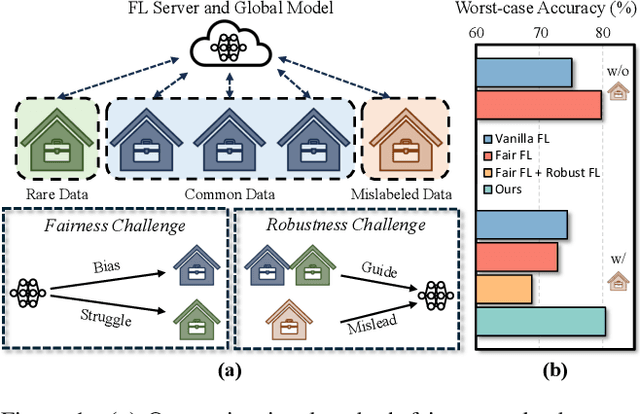

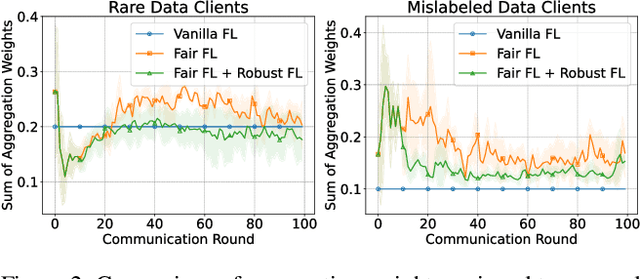

Abstract:Training a model that effectively handles both common and rare data-i.e., achieving performance fairness-is crucial in federated learning (FL). While existing fair FL methods have shown effectiveness, they remain vulnerable to mislabeled data. Ensuring robustness in fair FL is therefore essential. However, fairness and robustness inherently compete, which causes robust strategies to hinder fairness. In this paper, we attribute this competition to the homogeneity in loss patterns exhibited by rare and mislabeled data clients, preventing existing loss-based fair and robust FL methods from effectively distinguishing and handling these two distinct client types. To address this, we propose performance-capacity analysis, which jointly considers model performance on each client and its capacity to handle the dataset, measured by loss and a newly introduced feature dispersion score. This allows mislabeled clients to be identified by their significantly deviated performance relative to capacity while preserving rare data clients. Building on this, we introduce FedPCA, an FL method that robustly achieves fairness. FedPCA first identifies mislabeled clients via a Gaussian Mixture Model on loss-dispersion pairs, then applies fairness and robustness strategies in global aggregation and local training by adjusting client weights and selectively using reliable data. Extensive experiments on three datasets demonstrate FedPCA's effectiveness in tackling this complex challenge. Code will be publicly available upon acceptance.
Fair Federated Medical Image Classification Against Quality Shift via Inter-Client Progressive State Matching
Mar 12, 2025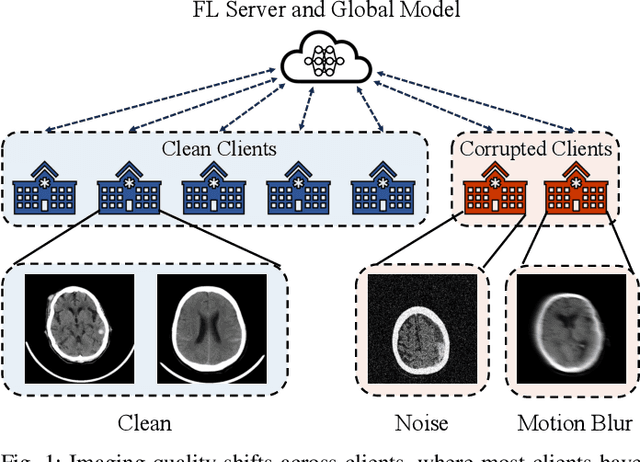
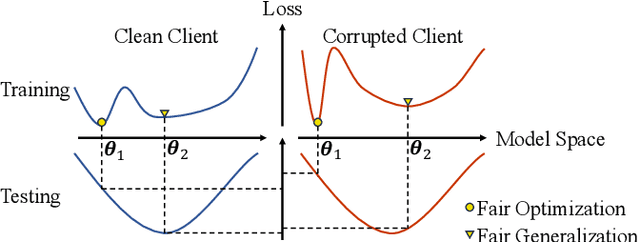
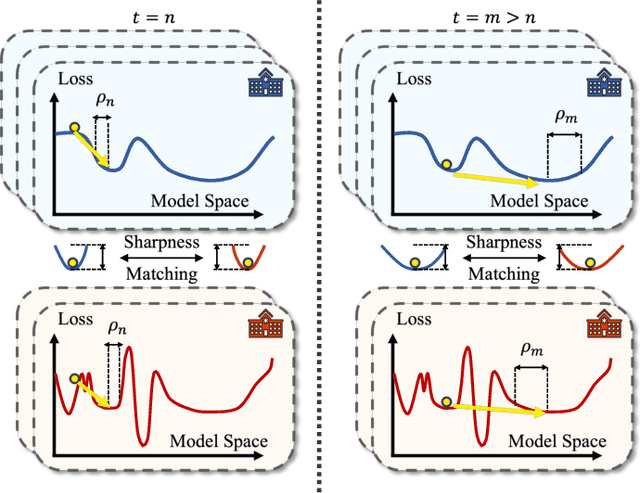

Abstract:Despite the potential of federated learning in medical applications, inconsistent imaging quality across institutions-stemming from lower-quality data from a minority of clients-biases federated models toward more common high-quality images. This raises significant fairness concerns. Existing fair federated learning methods have demonstrated some effectiveness in solving this problem by aligning a single 0th- or 1st-order state of convergence (e.g., training loss or sharpness). However, we argue in this work that fairness based on such a single state is still not an adequate surrogate for fairness during testing, as these single metrics fail to fully capture the convergence characteristics, making them suboptimal for guiding fair learning. To address this limitation, we develop a generalized framework. Specifically, we propose assessing convergence using multiple states, defined as sharpness or perturbed loss computed at varying search distances. Building on this comprehensive assessment, we propose promoting fairness for these states across clients to achieve our ultimate fairness objective. This is accomplished through the proposed method, FedISM+. In FedISM+, the search distance evolves over time, progressively focusing on different states. We then incorporate two components in local training and global aggregation to ensure cross-client fairness for each state. This gradually makes convergence equitable for all states, thereby improving fairness during testing. Our empirical evaluations, performed on the well-known RSNA ICH and ISIC 2019 datasets, demonstrate the superiority of FedISM+ over existing state-of-the-art methods for fair federated learning. The code is available at https://github.com/wnn2000/FFL4MIA.
 Add to Chrome
Add to Chrome Add to Firefox
Add to Firefox Add to Edge
Add to Edge